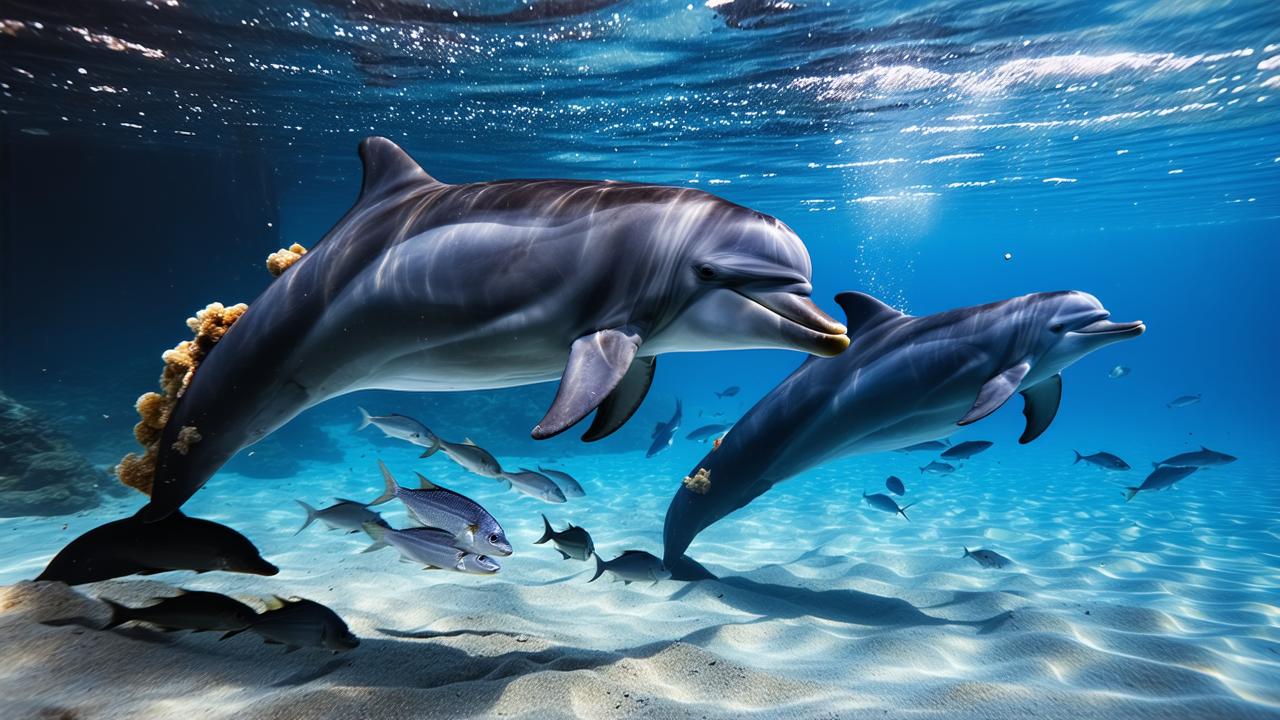Australian Dolphins Use Sponges to Hunt Fish — But It's Harder Than It Looks
Australian Dolphins Use Sponges to Hunt Fish — But It's Harder Than It Looks
Some dolphins in Australia have developed a unique and fascinating method of hunting fish. Instead of relying solely on their natural abilities, these dolphins use sponges as tools, a technique that has captured the attention of scientists and nature lovers alike. This behavior, however, is far more complex than it appears.
These dolphins, found in Shark Bay, Australia, have been observed using sponges on their beaks, similar to a clownfish's nose. The sponges act as a protective layer, shielding their sensitive beaks from sharp rocks and other hazards on the seafloor. As they swim, they use the sponges to dig through the sand and rubble, stirring up fish like the barred sandperch, making them easier to catch.
Despite its effectiveness, this method is not easy. According to new research published in the journal Royal Society Open Science, the sponges interfere with the dolphins’ highly developed echolocation system. Echolocation is a critical skill for dolphins, allowing them to navigate and locate prey in dark or murky waters by emitting sounds and listening for the echoes.
Ellen Rose Jacobs, a marine biologist at the University of Aarhus in Denmark and a co-author of the study, explained that the sponges have a muffling effect, similar to how a mask might muffle sound. “Everything looks a little bit weird, but you can still learn how to compensate,” she said. Her research involved using an underwater microphone to confirm that the dolphins were still using echolocation clicks, despite the sponge's interference.
Scientists believe that sponge hunting is an efficient strategy for catching fish, but it requires a high level of skill and training. The sponges, which can be as large as a softball or a cantaloupe, vary in size and texture. This means the dolphins must learn to handle them with precision, an ability that only a small percentage of the population has mastered.
Mauricio Cantor, a marine biologist at Oregon State University, likened sponge hunting to “hunting when you’re blindfolded — you’ve got to be very good, very well-trained to pull it off.” This difficulty may explain why only about 5% of the dolphins in Shark Bay engage in this behavior — roughly 30 dolphins, according to the study.
Learning to use sponges is a long process. Dolphin calves spend around three to four years with their mothers, observing and imitating their behavior. The ability to hunt with sponges is passed down exclusively from mother to offspring, making it a rare and valuable skill within the dolphin community.
“It takes them many years to learn this special hunting skill — not everybody sticks with it,” said Boris Worm, a marine ecologist at Dalhousie University in Canada. The challenge of mastering this technique may also explain why it’s not widespread among the dolphin population.
For those dolphins that do master it, the rewards are significant. The use of sponges allows them to access food sources that other dolphins cannot reach, giving them a distinct advantage in a competitive environment.
As researchers continue to study these remarkable animals, they are gaining a deeper understanding of how intelligence and innovation play a role in the survival of species. The sponge-hunting behavior of Australian dolphins is a testament to the adaptability and ingenuity of these intelligent marine mammals.
